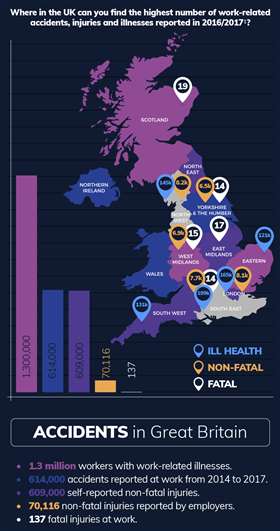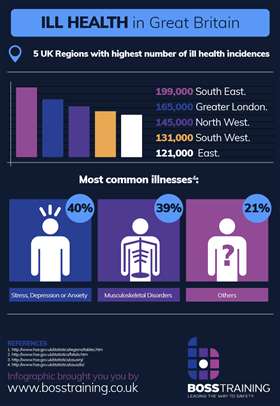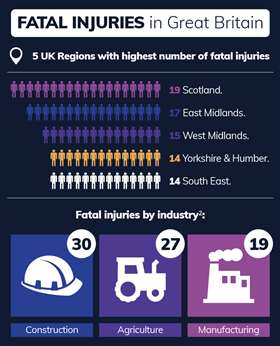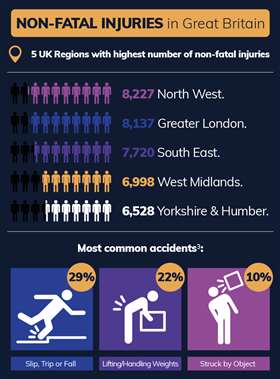Boss breaks down injury data
22 March 2018
UK-based Boss Training, a major provider of International Powered Access Federation (IPAF) training, has gathered the latest figures for workplace injuries and illnesses from the Health & Safety Executive (HSE) to create its own analysis.

The graphs and charts produced by Boss are designed to provide a better understanding of the problems associated with a lack of proper health and safety practices in the work place.
Boss used a range of studies based on UK data from the HSE, which are available on the organisation’s website, including the Labour Force Survey, Fatal Injuries, Non-fatal injuries and Work-related ill-health.

According to Boss, these figures show that in 2016/17, there were 1.3 million workers with work-related illnesses in the UK.
”These illnesses may have been avoidable in cases where health and safety regulations have not been followed carefully. More worryingly, in the same time period, 137 fatal injuries occurred at work throughout the UK.”
Detailed in the graphic is the geographical information regarding these injuries and illnesses, showing which parts of the country suffered the greatest number of injuries, illnesses and fatalities.

In 2016/17, Scotland suffered 19 workplace fatalities, with the majority of the total number happening within the construction industry. The construction industry was closely followed by agriculture and manufacturing industries in terms of workplace fatalities in the UK.
The North West of England saw the highest number of non-fatal injuries across the country with the most common accidents across the country being a slip, trip or fall – with lifting/handling weights or being struck by objects making up the top three most common workplace accidents.

The South East saw the highest number of ill health incidences. With the most common illnesses being stress, depression or anxiety at a staggering 40%. This was closely followed by Musculoskeletal Disorders at 39%.
“These numbers show us that there is still an awful lot of work to be done within these industries in order to protect workers from dangers and unhealthy environments.”


